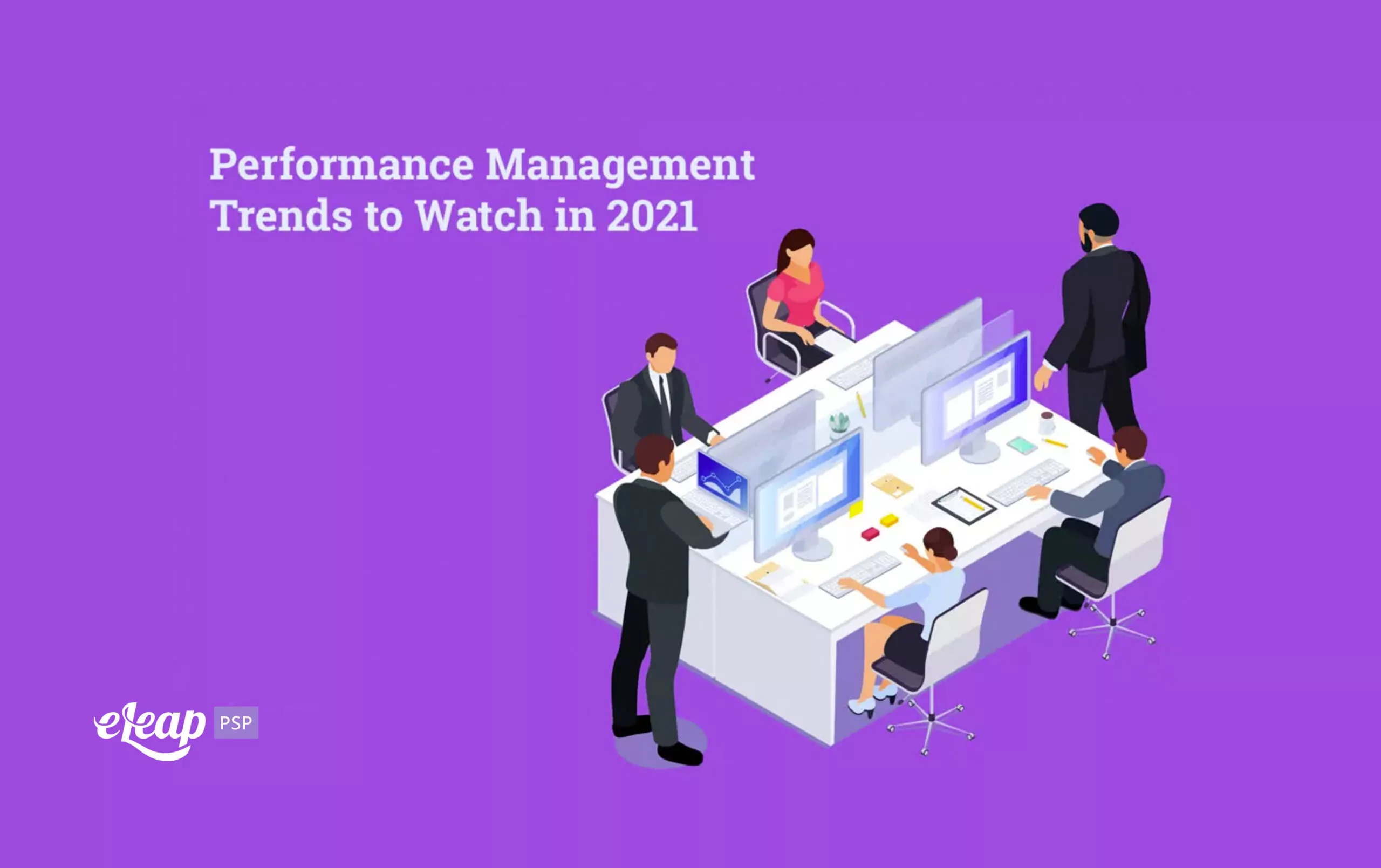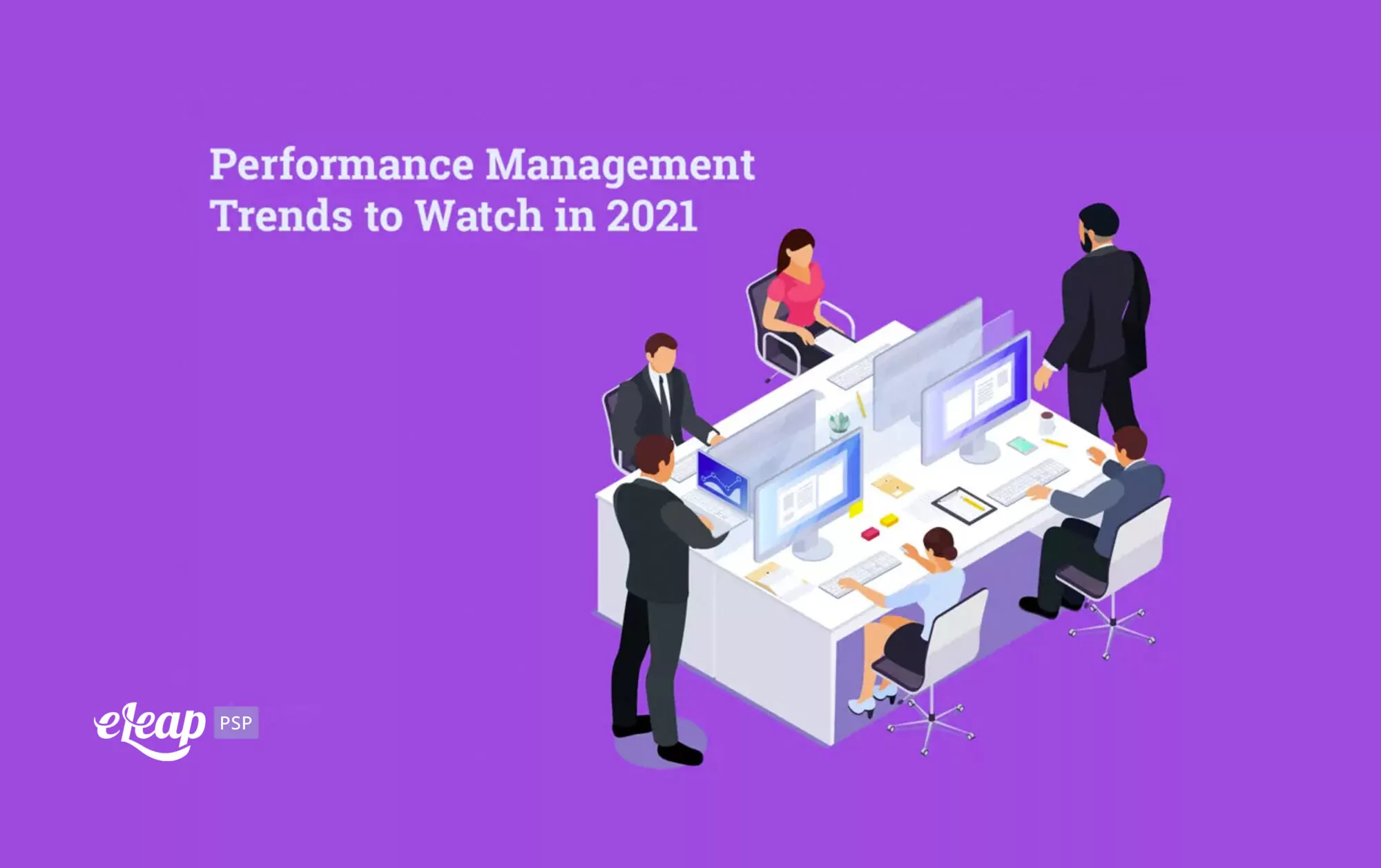Performance Management Trends to Watch in 2021

Performance management is not static. In fact, it’s evolving at an ever-faster pace. Even the impact of 2020 hasn’t been enough to halt change.
As a decision-maker, you must be able to keep up with those changes. They inform how you manage employee performance, how you interact with team members, how team members interact with each other, and, ultimately, how successful the business is. In this post, we’ll walk through some of the most critical performance management trends to watch as we approach 2021.

Continue Building Trust
In 2020 and previous years, there’s been a growing sense that businesses must trust their employees not rip off their employer. For instance, micromanaging has become less and less common. There’s a realization that employees want to do their jobs, so time, money, and effort spent to monitor some aspects of performance is simply waste.
Look for that trend to continue into 2021. Organizations are becoming more and more trusting of their employees. In the process, they’re dismantling systems that waste energy and time, burn through capital for no good reason, and that tax human talent for no real purpose.
Look at Netflix as an example. The company has no expense management policy because the company chose to trust its employees to do the right thing. That gamble has paid off, allowing Netflix to eliminate some bureaucracy and a wasteful process that consumed resources with no real ROI.
Continuous Performance Management Continues to Grow
In 2018, 76% of the companies that Deloitte surveyed in their Human Capital Trends study had reinvented their performance management processes. The goal for all of these companies? To make PM more continuous and holistic.
It’s a brave new day for performance management, and managers and employees. The old PM methodology, punitive and ineffective as it was, is slowly dying off. More and more companies will continue to realize that to truly change the way their employees perform, they need to foster true relationships.
Continuous performance management does away with the once or twice a year performance review. In its place, you have regular check-ins (quarterly at a minimum, but monthly is better), followed by weekly feedback and course correction meetings between employees and management. Increasingly, companies are also integrating peer review performance management to help include everyone in the process.
EX Is Important
If you’re in a consumer-facing organization, chances are good you’re familiar with CX or UX – the idea of the customer experience. Well, in the realm of performance management, employee experience (EX) is equally important. What does employee experience mean, though?
In the past, employers didn’t give a lot of thought to what employees experienced in the workplace or how that experience affected them. Employees were expected to do their jobs, and that’s all that mattered. Today, that idea is beginning to fade.
More and more, decision-makers are coming to realize that employees’ thoughts, feelings, decisions, and overall experience matter a great deal. This runs from how someone feels walking through the doors to the quality of the relationships they have in the workplace. It all factors into performance.
A positive employee experience supports workers and enables them to do their jobs to the best of their ability. It raises performance across the entire organization, improving productivity, profitability, and efficiency. It also helps employers tackle serious challenges, such as poor morale, attrition, and stem the flow of talent bleeding away to competitors as they search for better, brighter futures.
Delivering Support for the Individual Employee
When you think about B2C marketing, what’s one of the single most notable trends? It’s personalization. Personalization enables businesses to better reach their audience, allows them to delight customers, and fosters engagement on a deep level.
The same thing applies to employee-business relationships. By providing support for the individual employee, businesses can develop in-house talent better, improve performance and productivity, reduce churn, and much more. What does individual employee support look like?
It’s not all that complicated. For instance, giving employees a choice of whether they want to work in an open, collaborative space or a secluded, focus-oriented space is a good example. Providing employees with customized development plans within your LMS that lead them to more rewarding, fulfilling positions within the company is another.
Letting Your Employees Do What They Do Best
There’s a notion that employees should only do what they were hired for – they’re relegated to their role within the business and that’s all. The challenge here is that employees are often not in roles that connect to what they do best.
Ultimately, this leads to a disconnect at a deep level. Employees are left frustrated and unfulfilled. It fosters churn and employees defecting to competitors.
By allowing your employees to do what they do best, regardless of their defined role within the organization, you enable them to become purpose-driven. Of course, you have to go about this the right way. Creating tailored learning paths to help employees develop themselves and move into positions where they can pursue their purposes is one way to do that.
Letting your employees do what they do best will also require that you provide individualized support and that you have detailed information about each employee. Combined, those two elements allow you to connect the dots and move them forward. In turn, that moves the business forward.
A Greater Focus on Well-Being
We’re already seeing this trend in the workplace. Businesses are buying smartwatches and issuing them to employees, allowing them to track their health. Companies are offering access to yoga classes, paid time off to take care of wellness-related issues, and much more.
Look for this trend to continue as more and more decision-makers come to realize that when they care for the well-being of their employees, their employees can do their best work. From mental health to cardiovascular health, from achieving a better work-life balance to learning life skills and connecting with other people, well-being is going to become an ever-greater focus.
These are just some of the trends that will affect performance management as we move into 2021. Of course, there are others, like social distancing, video conferencing, and remote work that will remain a part of most people’s day-to-day experience, but it’s important to keep an eye on the more substantive, long-lasting shifts, too.